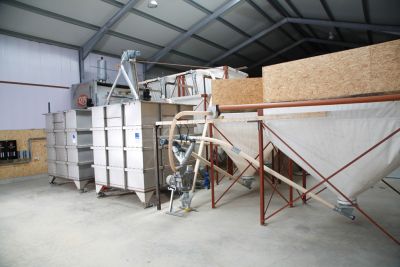The advantages of forage fermentation
- Reduction of feed costs
- Better feed conversion
- Stable forage due to natural lactic acid
- Lower consumption of feed acids to lower the pH value
- Improved palatability when using rapeseed meal and field beans
Product specification

Forage fermentation
During feed fermentation, carbohydrates (sugar/starch) are converted into lactic acid by adding special lactic acid bacteria strains. Within 12 hours, the pH value in the mixture is lowered to below pH 4, thereby reducing undesirable microorganisms such as yeasts or coli germs. Mixtures of cereals (wheat, barley, rye, triticale, maize) and protein feeds (soya, rape, peas and field beans) mixed with warm water (60-65°C) are suitable for fermentation. The ready-fermented feed can be used proportionally up to 50% in the liquid feed ration.

Stainless steel fermentation tank 22,000 l capacity
Prerequisites for the use of forage fermentation
- Liquid feeding for piglets or fattening pigs
- Space for 2 fermentation containers in a frost-free environment
- Provision of a sufficient quantity of warm water
- hygienically safe feed
